North Cascades National Park is a beautiful alpine area located a short drive from Seattle, offering both peaceful forests and exciting mountain terrain.

In the west, dense forests nourished by ample rainfall provide opportunities to explore nature and view wildlife, while moving east, the landscape opens up to rugged mountains ready for adventure.
Unfortunately, this park is also one of the most remote in the US. While located in Washington State, most of the park's terrain cannot be reached by road. Many of its most amazing views require significant hiking and are not for everyone.
Of course, many would argue that this remoteness is actually a good thing because it keeps the North Cascades an untainted wilderness.
If you're looking for a true hidden gem of a park, here is a quick overview to help you plan your visit. Discover the best trails, hidden vistas, and tranquil spots to truly connect with nature!
A Quick Look at the Geography of North Cascades
The area is divided into three regions, each with its own unique geographic features.
Lake Chelan National Recreational Area
This area showcases a deep, stunning lake nestled within steep canyons.
It's accessible by car to the lake's edge, but from there, you'll need to take a boat or floatplane or a mix of leisurely walks and moderate hikes to places like Stehekin.
Ross Lake National Recreational Area
Here, the elongated, turquoise Ross Lake, surrounded by the North Cascades' rugged peaks, is a highlight.
While some viewpoints like Diablo Lake are car-accessible, reaching Ross Lake and the surrounding trails will require a boat or a hike, presenting a blend of accessible vistas and more adventurous exploration.
North Cascades National Park
Finally, the region's heart—the North Cascades National Park—is an expanse characterized by the IUCN category II designation, which speaks to its unspoiled ecosystems.
Though the North Cascades Highway (State Route 20) lets you drive to some viewpoints and trailheads, most of this pristine wilderness is explored on foot, catering to those seeking remote hikes and backcountry adventures.
Your Must-See Spots and Activities
With dazzling blue lakes, scenic drives, and tranquil overlooks, there's an endless array of activities to fill your itinerary at the North Cascades.
But be aware; if walking or hiking is hard for you or someone you're with, places like Cascade Pass, Sahale Arm, and Stehekin could be tough.
Good news, though! Ross Lake Viewpoint, Diablo Lake, Gorge Lake Campsite, Washington Pass Viewpoint, and Rainy Lake are easier to get to.
We'll explain more so you know what to expect and can make your trip nice for everyone.
1. Make a Quick Stop at Ross Lake Overlook

Ross Lake Overlook offers you a panoramic view that is nothing short of breathtaking. Take a moment here to soak in the jade-green waters' vistas against the backdrop of rugged mountains.
Reaching this magnificent viewpoint is easy, thanks to well-designed roads.
You can enjoy interpretive signs and stunning views directly from your car, allowing everyone to appreciate the North Cascades' beauty without hiking.
2. Explore the Waters of Diablo Lake
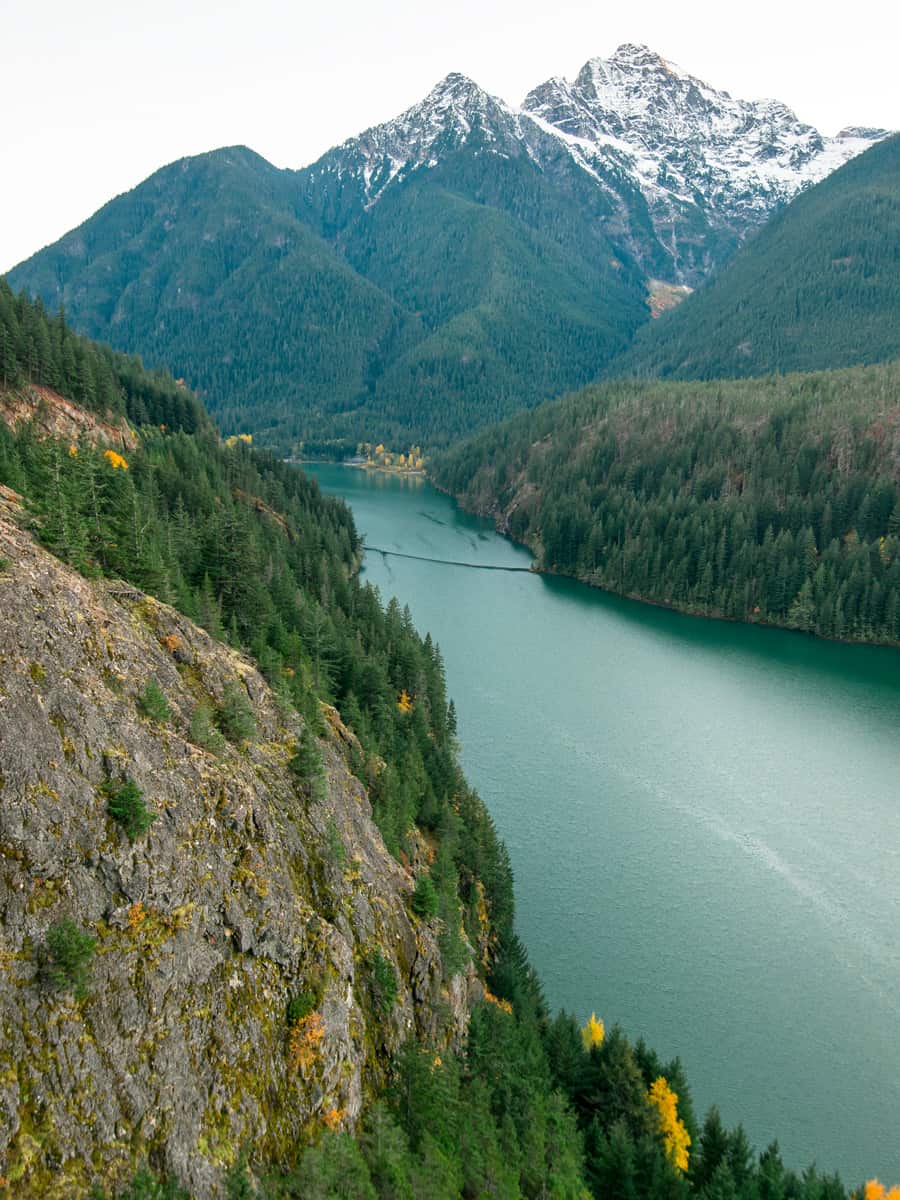
The turquoise waters of Diablo Lake are perfect for kayaking and canoeing. Glide across the lake and marvel at the surrounding peaks reflecting beautifully on the surface.
This paradise is accessible by the Diablo Lake Trailhead, located off State Route 20, near mile marker 1280. Follow signs to cross Diablo Dam, leading you directly to the trailhead and parking area.
Getting to this spot involves a moderate hike, stretching 7.6 miles round-trip with an elevation gain of 1,300 feet, and offers an adventurous route to the lake's edge, where your kayaking or canoeing journey can begin.
Alternatively, the Diablo Lake Overlook provides a more accessible point for all visitors to enjoy the lake's stunning views without the need for hiking.
3. Scenic Drive at North Cascades Highway

Wind along the North Cascades Highway, a 132-mile scenic drive. Each turn unveils the park's new majesties that will keep you reaching for your camera.
Plan for at least an hour's drive for extra time to explore nearby attractions like Diablo Lake Overlook and Ross Lake Overlooks.
The highway opens for travel between late May and early October, offering clear views of the park's beauty. Be sure to note, though, that it closes from mid-November to late May due to the risk of snow and avalanches.
4. Go Camping at Gorge Lake Campground
Pitch your tent at Gorge Lake Campground. The tranquility of camping by the lake is enhanced by the whispers of nearby waterfalls and the serene forest atmosphere.
This campground is easily reachable by car, located just outside Diablo, north of State Route 20, at mile post 126.
Although the campground operates without water or services, each site includes a picnic table and a fire pit, and there's a boat launch for lake activities.
Given its proximity to several attractions and the North Cascades Highway, Gorge Lake Campground serves as an excellent base for exploring the area.
5. Capture the Beauty of Washington Pass Overlook
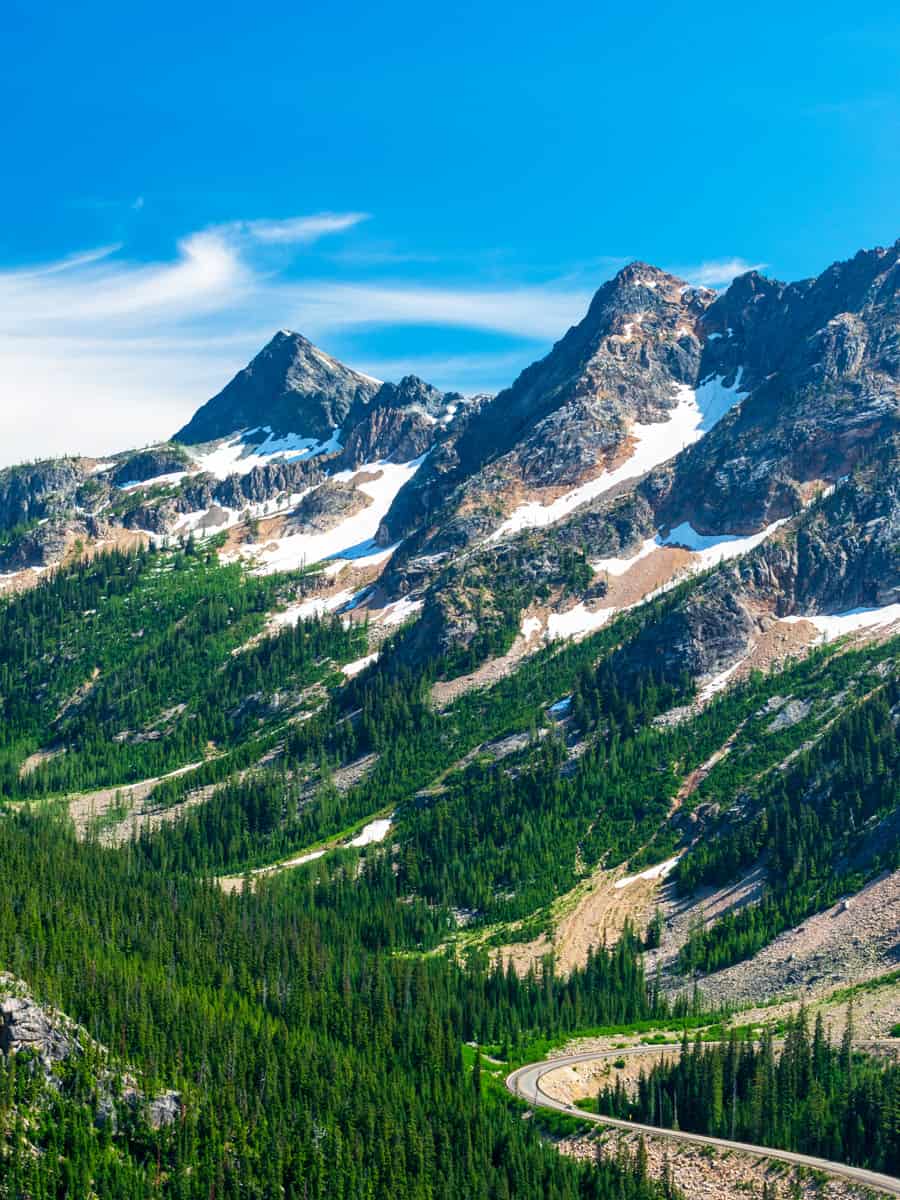
Washington Pass Overlook allows you to witness towering peaks like Liberty Bell Mountain. Photographers and nature lovers alike revel in the stunning landscapes this spot provides.
Access to Washington Pass Overlook is straightforward by car, located off State Route 20. It features a short, level, and paved 400-foot trail leading to a spectacular view of Liberty Bell Mountain.
6. Witness Wildflowers at Heather-Maple Pass
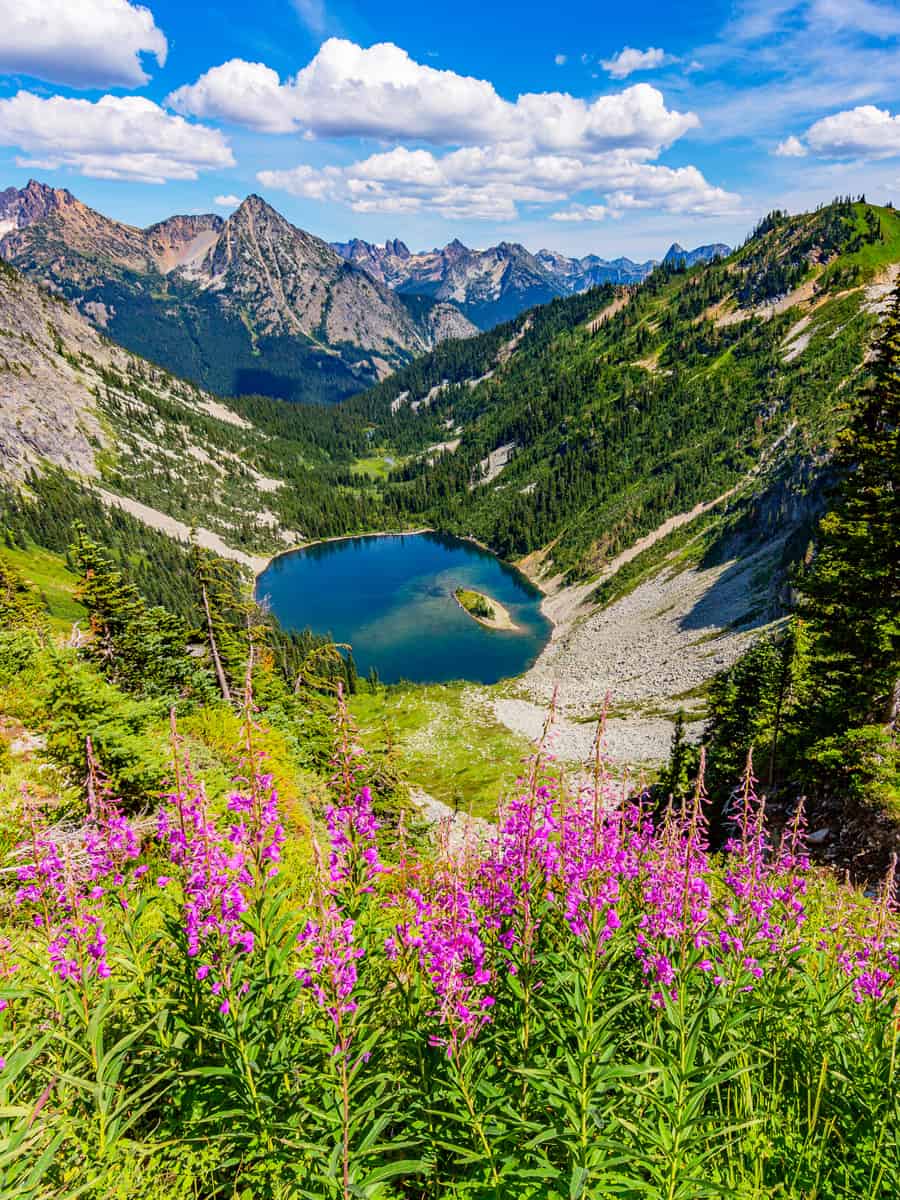
A hike to Heather-Maple Pass rewards you with an array of wildflowers blooming in the alpine meadows. Each step along this trail promises a new hue of nature's palette.
To embark on this journey, you'll need to hike the loop, which spans 7.4 miles with a significant elevation gain, making it a rewarding challenge.
The trailhead is accessible by car along the North Cascades Highway, but you'll need a Northwest Forest Pass for parking.
7. Relax by the Shores of Lake Ann

Lake Ann is an idyllic spot for relaxation. Enjoy a leisurely picnic or simply unwind by the serene shores, surrounded by the high peaks of the North Cascades.
To access this tranquil retreat, head to the Lake Ann trailhead, accessible by car via the eastbound Mount Baker Highway from Glacier, Washington.
For the rest of the journey, you'll need to hike through the Mt. Baker-Snoqualmie National Forest, known for its scenic vistas of Mt. Shuksan and its glaciers.
This hike is best for intermediate hikers as it involves a series of ascents and descents, totaling an elevation gain of 549 meters.
8. Bird Watch by the Tranquil Rainy Lake
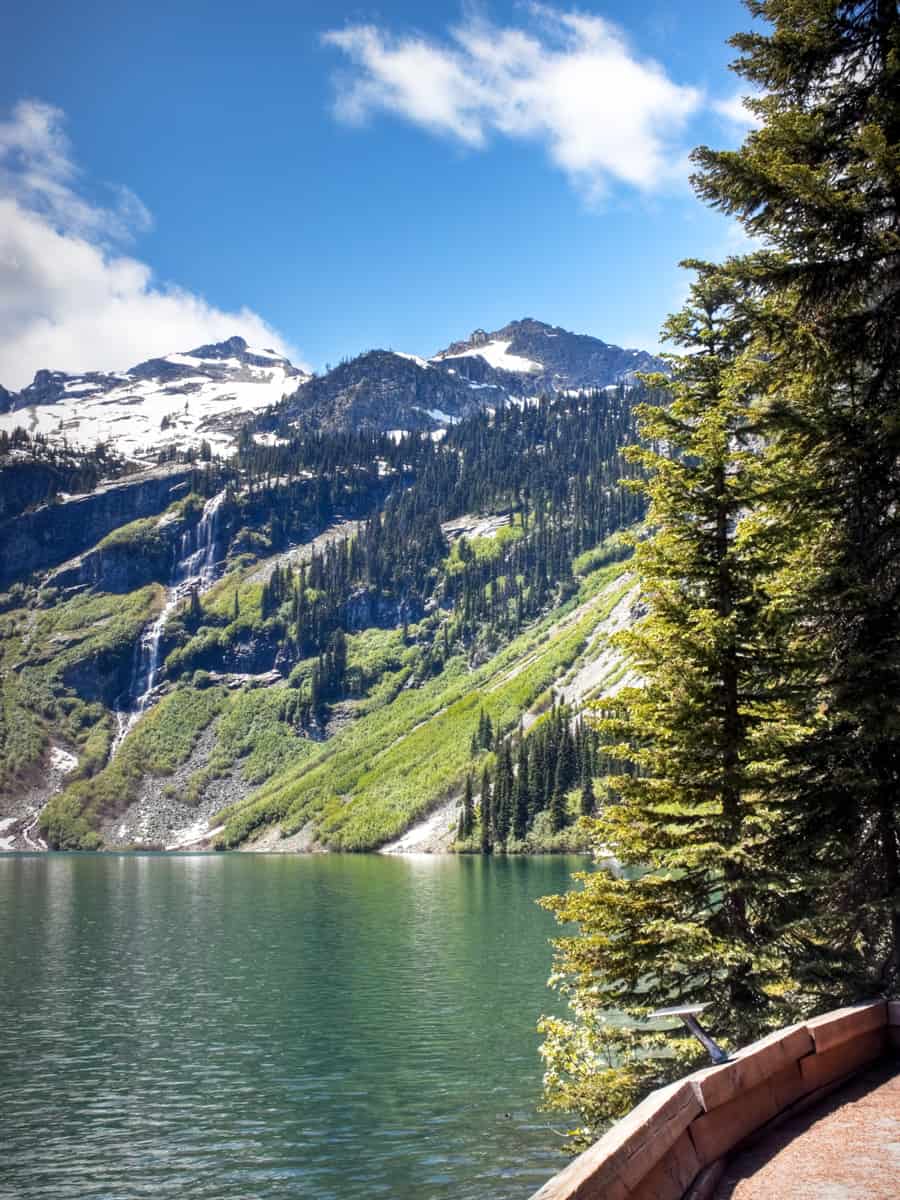
Grab your binoculars and visit Rainy Lake for bird watching. The calm waters and the lush surroundings attract a variety of bird species throughout the year.
Reaching this serene lake is made easy with a paved, one-mile path suitable for wheelchairs.
This trail starts from the Rainy Pass Trailhead, situated along the North Cascade Highway (Hwy 20) at milepost 158, complete with amenities like parking and toilets designed for accessibility.
As you traverse the trail, you'll pass through enchanting subalpine forests and wet meadows, with benches and educational signs dotted along the route to enrich your visit.
9. Observe Wildlife at Cascade Pass and Sahale Arm
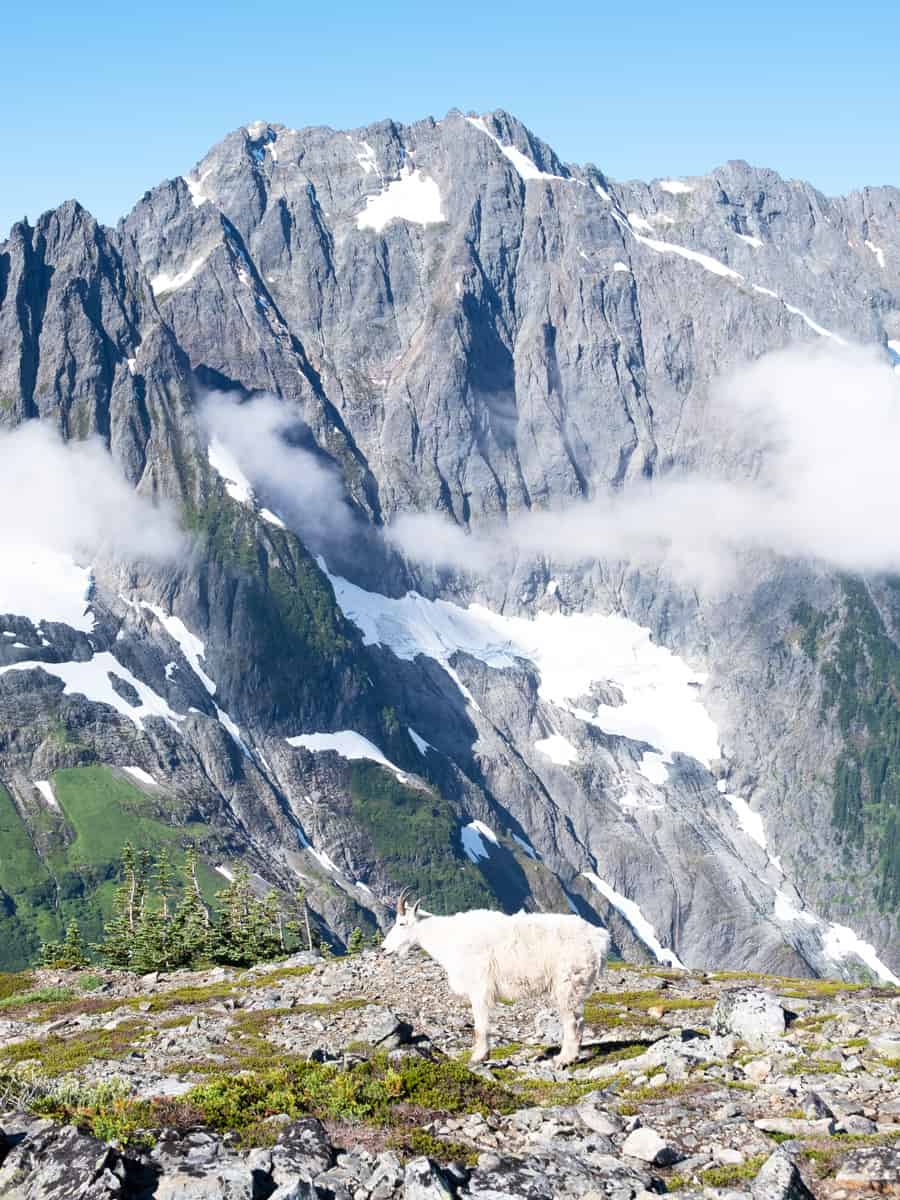
Experience the wildlife of Cascade Pass and Sahale Arm. Keep your eyes peeled for marmots, black bears, or even elusive mountain goats roaming in their natural habitat.
Unfortunately, you'll need to embark on the journey yourself to experience the breathtaking vistas and vibrant wildlife adventures firsthand.
The trail to Cascade Pass is a manageable trek, stretching 3.7 miles from the trailhead with an elevation gain of 1,700 feet, making it an accessible journey for many hikers.
If you're up for a challenging adventure, continue to Sahale Arm, a strenuous hike covering 5.9 miles and climbing 3,940 feet to the glacier. This hike is indeed a bucket list must for serious adventurers.
Access to the trailhead is via Cascade River Road, starting from State Route 20 at Marblemount.
This 23.1-mile drive, featuring both paved and gravel sections, leads adventurers to the start of their journey, usually accessible by late June each year.
10. Visit the Small Community of Stehekin
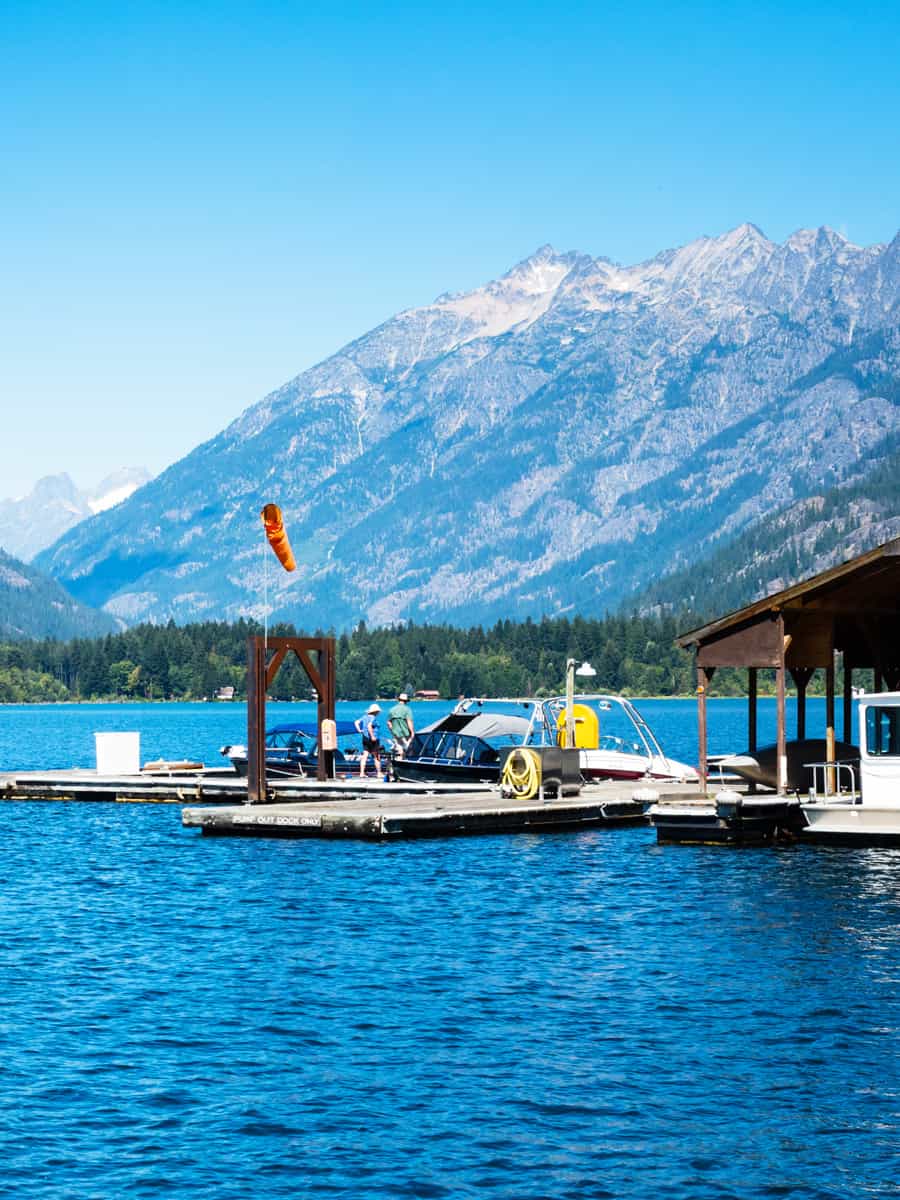
Discover Stehekin, a remote village nestled within the park that offers a unique retreat away from the hustle and bustle. Unfortunately, you can't drive here; it's a journey by boat, plane, or on foot.
- By Boat: Ferries offer scenic routes from Chelan to Stehekin, with stops at Fields Point and Lucerne, allowing you to experience the majestic Lake Chelan on their journey to Stehekin.
- By Plane: For those looking for a quicker route or to capture aerial views of the Cascades, private or chartered flights land directly on Lake Chelan, bringing visitors to the heart of Stehekin.
- On Foot: Finally, you can embark on a 23-mile trek from Cascade Pass to High Bridge. This historic trail offers scenic views, ending with a shuttle service to Stehekin.
If you're looking to explore some budget-friendly national parks, we've got a whole list right here!
Feel Adventurous with These Trails and Unique Hiking Opportunities
We've already embarked on numerous hiking adventures, but if your passion for trekking knows no bounds and you're always in search of more thrilling trails, then prepare to be exhilarated by these opportunities:
1. Trail of the Cedars Nature Walk
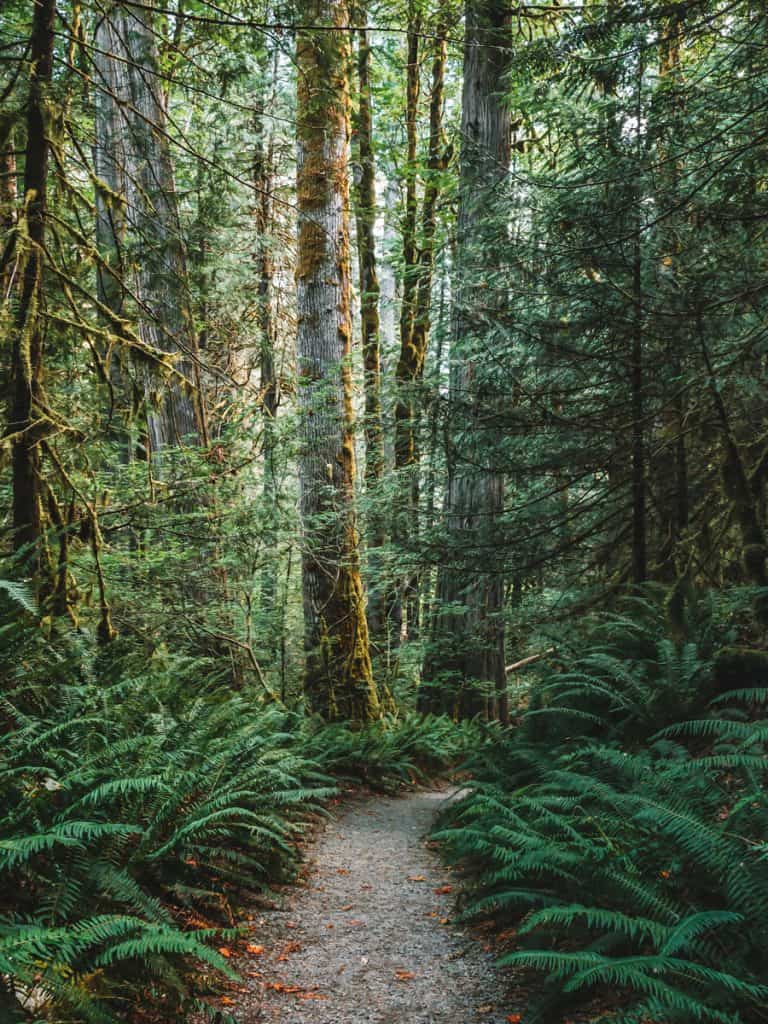
What to Expect:
- Accessibility: Very accessible for everyone, including those with mobility aids.
- Length: About 1-mile round trip.
- Challenge Level: Easy, almost no elevation gain.
Start your journey on the Trail of the Cedars. It's an easy, flat walk, great for a short, relaxing trip. This trail makes a 0.6-mile loop and has almost no hills. Along the way, you'll see amazing, big, old cedar trees.
2. Ladder Creek Falls
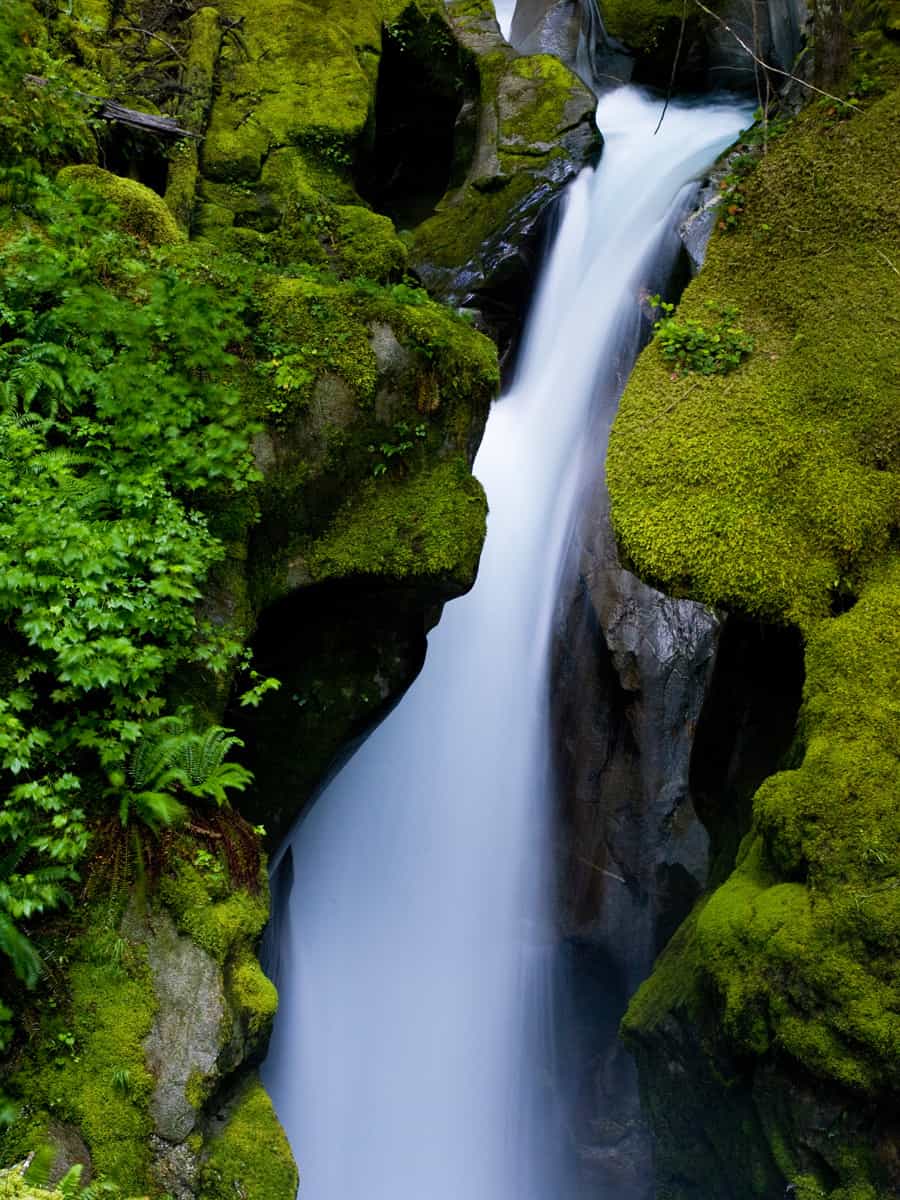
What to Expect:
- Accessibility: Mostly accessible, with some stairs or steep sections.
- Length: Approximately 0.5 to 1-mile round trip.
- Challenge Level: Easy to moderate, with slight elevation changes.
Up your journey with a magical evening walk to Ladder Creek Falls. Lit gardens light your way to the waterfall, which looks amazing at night. This short walk is captivating.
Love hiking and waterfalls? Check out these easy-to-follow waterfall trails in the Great Smoky Mountains!
3. Blue Lake
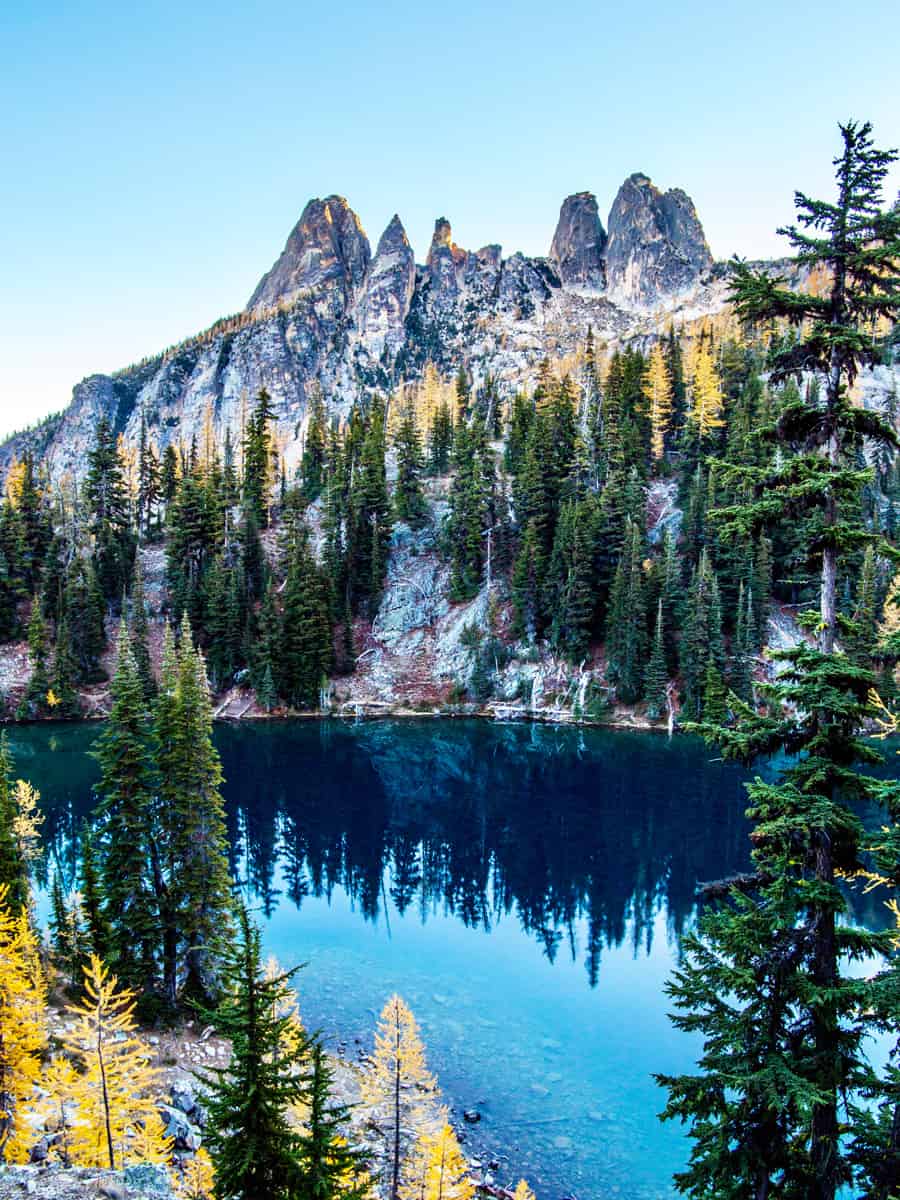
What to Expect:
- Accessibility: Moderate, not wheelchair or stroller-friendly.
- Length: Roughly 4 to 5 miles round trip.
- Challenge Level: Moderate, with an elevation gain of about 1,000 feet.
Next, we got this amazing 4.4-mile round trip to Blue Lake. The lake's clear water mirrors the rugged peaks around it. It's a great place for photos showing the North Cascades' beauty.
4. Thunder Knob
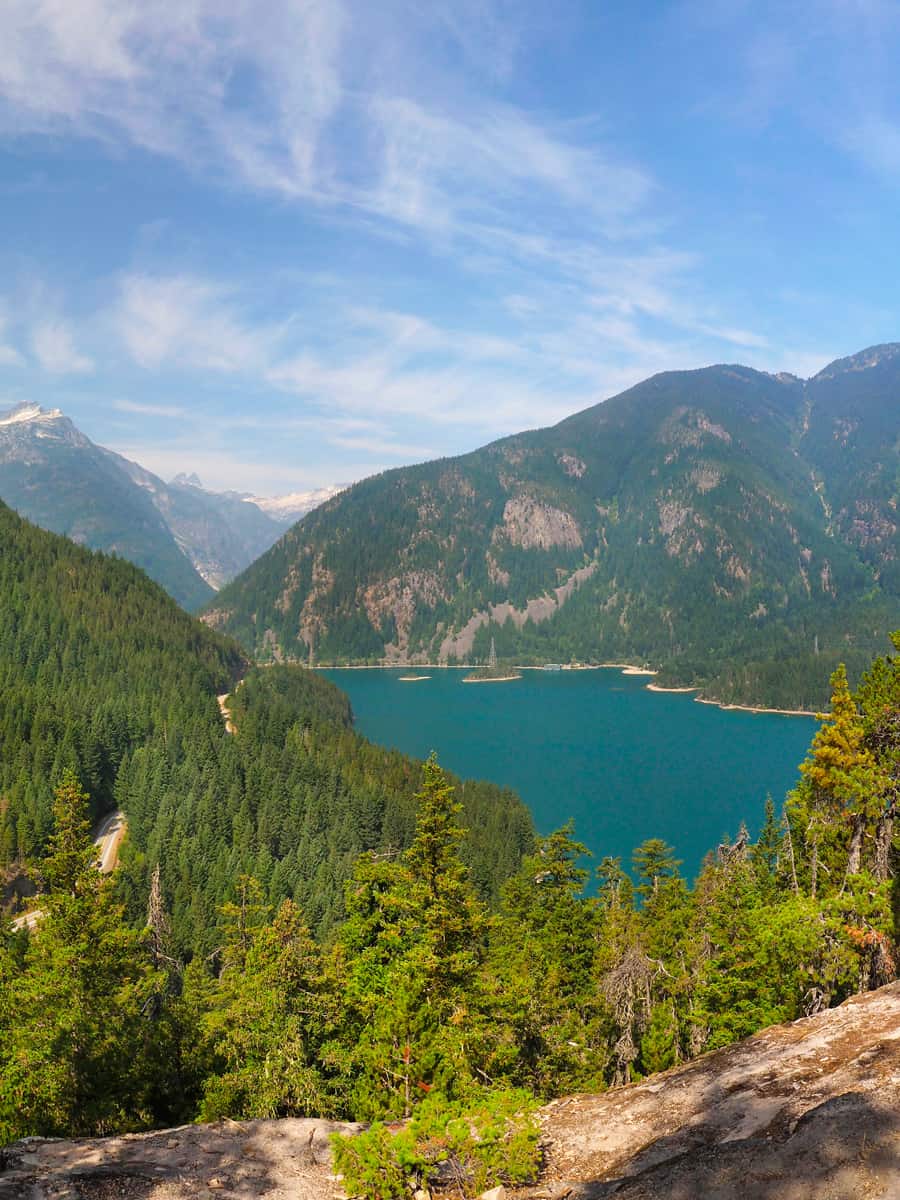
What to Expect:
- Accessibility: Moderate, with some elevation gain.
- Length: About 3 to 4 miles round trip.
- Challenge Level: Easy to moderate, with an elevation gain of around 425 feet.
Thunder Knob is a 3.6-mile round-trip hike with great views of Diablo Lake. It's fairly easy with some uphill parts and makes a good half-day trip with beautiful sights.
You can also view Diablo Lake from a pullout along the North Cascades Highway - no hiking required!

5. Rainbow Loop
What to Expect:
- Accessibility: Moderate; some sections may be challenging for those with mobility issues.
- Length: Approximately 4 to 7 miles, depending on the chosen route.
- Challenge Level: Moderate, with varying elevation gains depending on the route.
Explore Rainbow Loop for different views, from forest paths to meadows with wildflowers.
Depending on the chosen route, the distance can range from approximately 4 to 7 miles, allowing you to experience some of the park's most colorful and diverse landscapes.
6. Hidden Lake
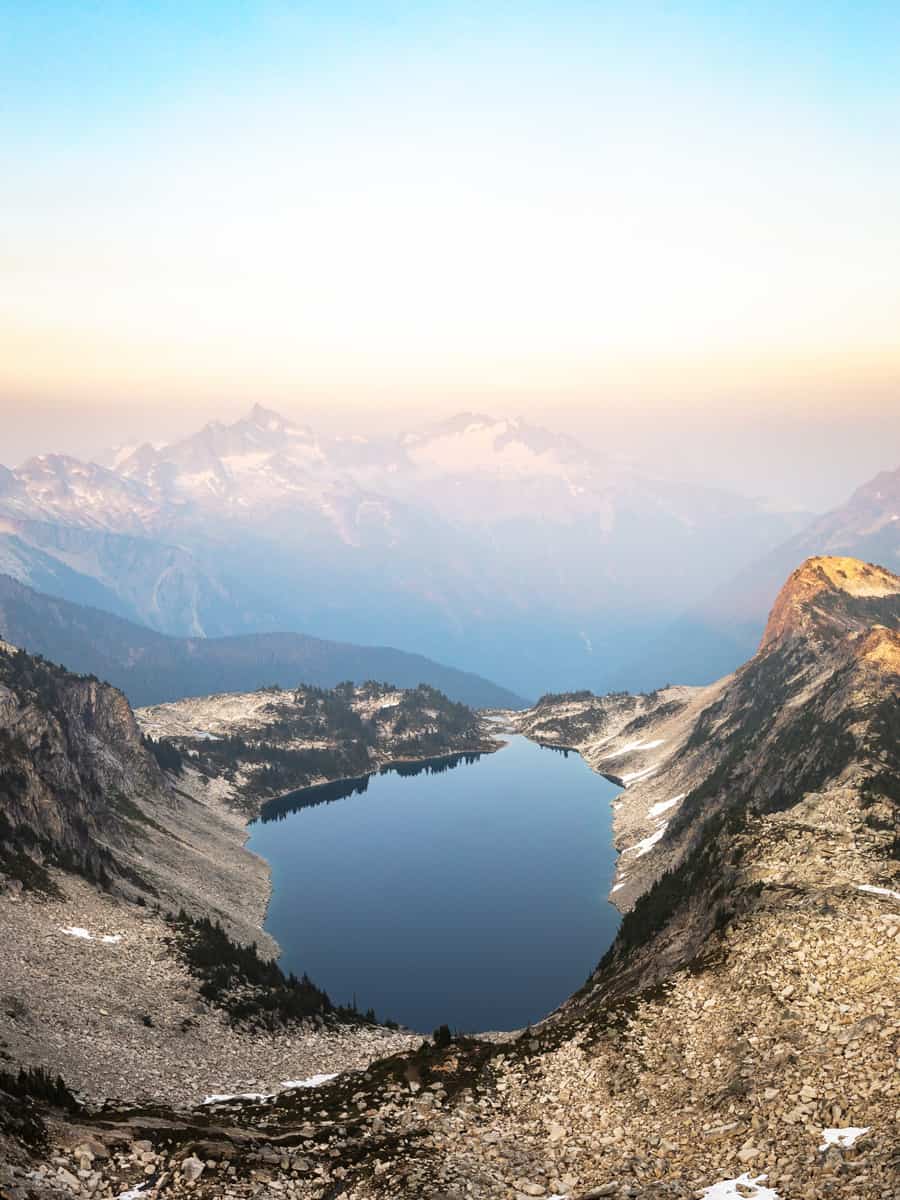
What to Expect:
- Accessibility: Challenging, with steep and rugged sections.
- Length: About 5 to 8 miles round trip.
- Challenge Level: Moderate to difficult, with significant elevation gain.
Hidden Lake is an 8-mile round trip hike and is tougher, but it rewards you with amazing views of a lake and mountains. Prepare for a challenging yet unforgettable experience.
7. Maple Pass Loop

What to Expect:
- Accessibility: Challenging, steep and uneven paths.
- Length: Around 7 to 8 miles for the full loop.
- Challenge Level: Moderate to difficult, with an elevation gain of over 2,000 feet.
Considered one of the best day hikes, the Maple Pass Loop spans 7.2 miles and takes you through stunning vistas of peaks and valleys. The path goes up a lot, but the amazing views at the top are really worth it!
8. Thornton Lake
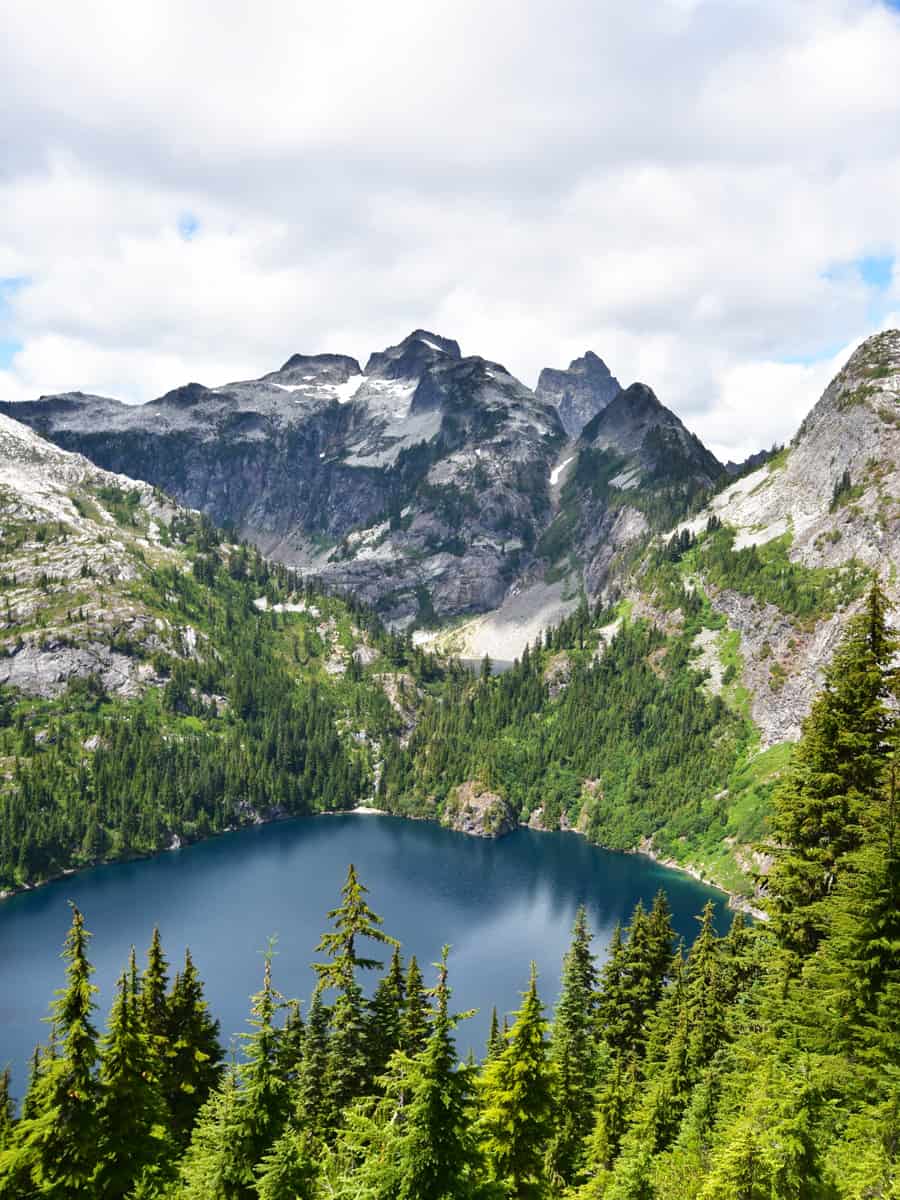
What to Expect:
- Accessibility: Moderate to challenging, with steep or rough trails.
- Length: Roughly 9 to 10 miles round trip.
- Challenge Level: Difficult, with a substantial elevation gain of over 2,500 feet.
Lastly, hike the demanding trail to Thornton Lake. This 10.5-mile round trip path weaves through forests to reveal one of the park's quietest alpine lakes nestled against crisply outlined peaks.
Experience North Cascades' Rich Wildlife and Stunning Natural Features!
Alongside the scenic vistas and adventurous hikes, the park also offers glimpses of its majestic wildlife and awe-inspiring natural features that make this place extraordinary.
1. Red Columbine
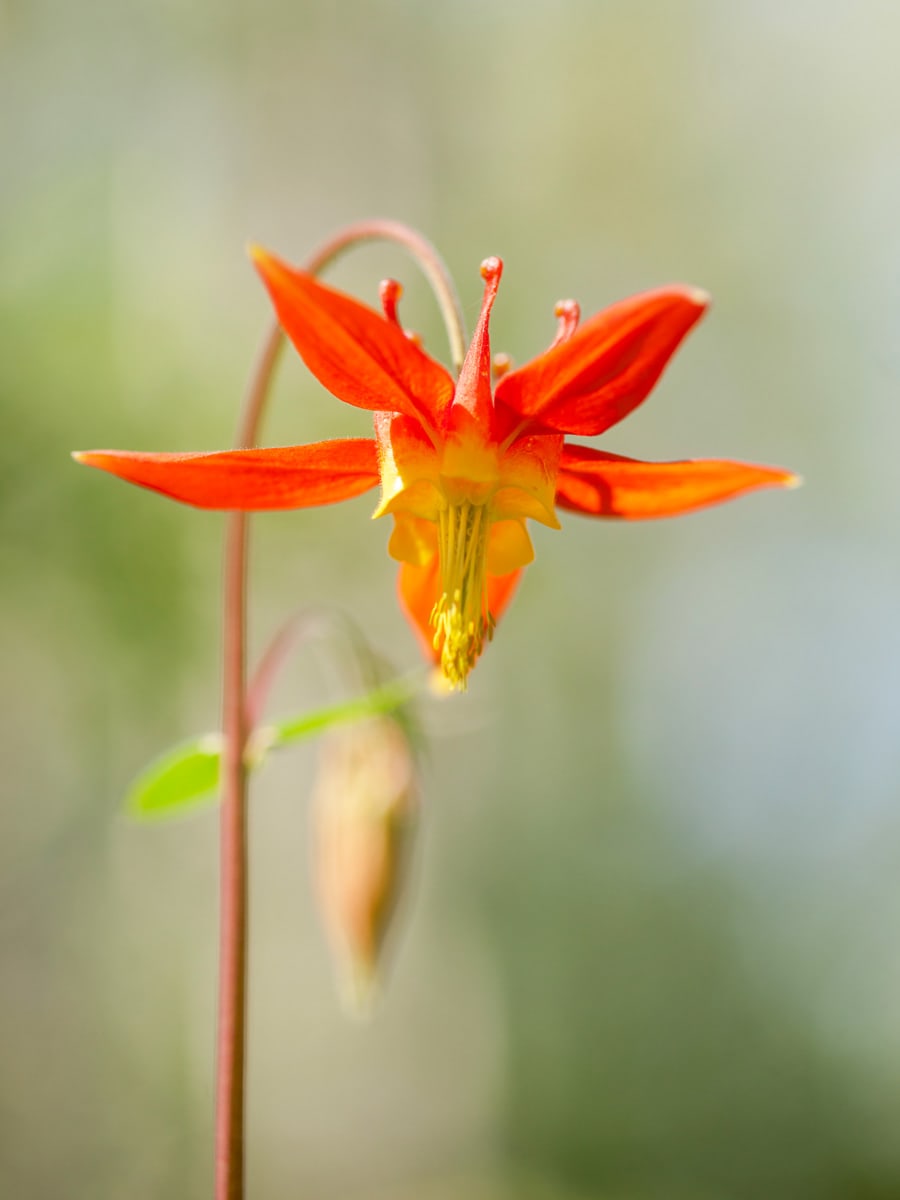
Across the landscape, you'll notice the striking Red Columbine flowers. Their delicate, nodding heads and intricate petals are a favorite amongst the park's pollinators.
2. Western Red Cedars
The Western Red Cedars stand tall, their towering presence a reminder of the park's ancient and enduring spirit. The fresh, earthy scent they release is an invigorating treat during your woodland explorations.
3. Black Tailed Deer
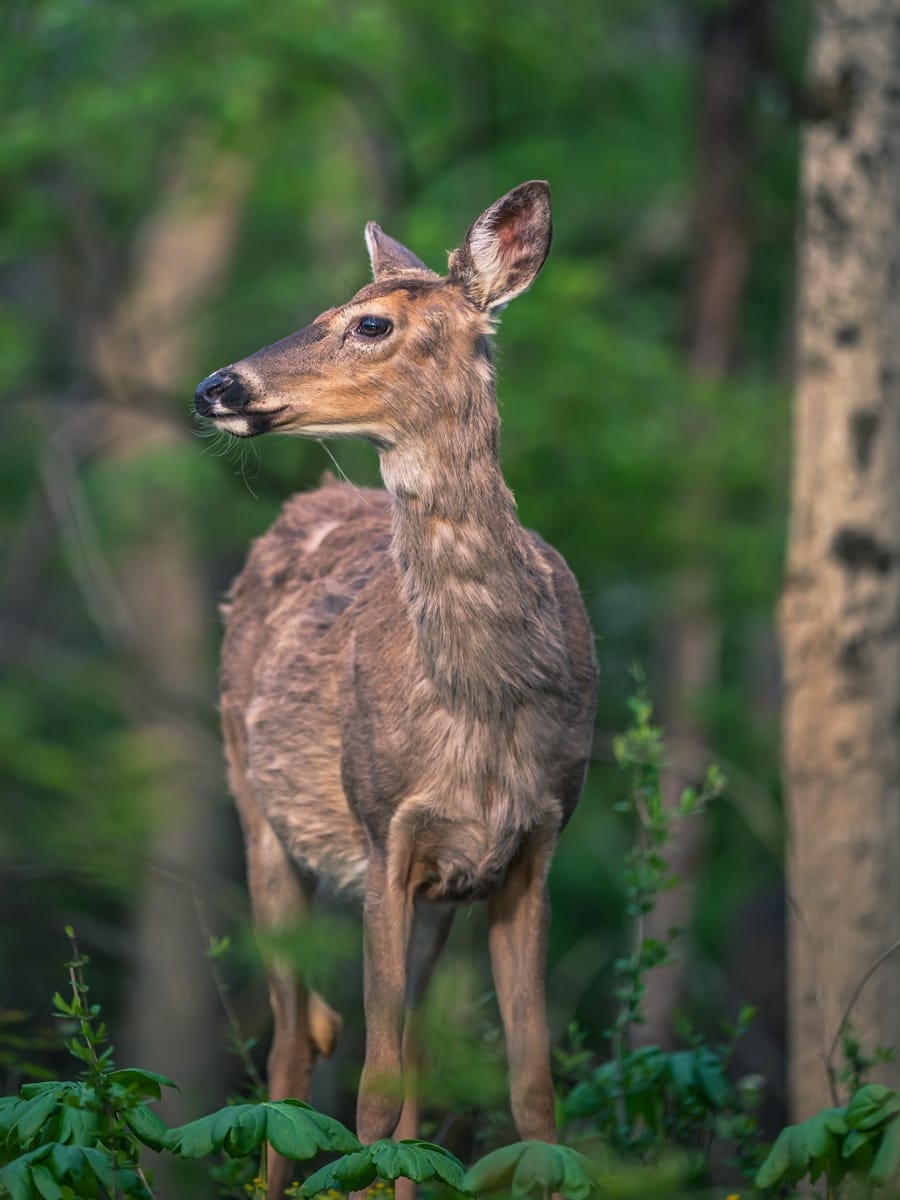
The Black Tailed Deer gracefully roam the park, often spotted in the lush meadows and forested valleys.
4. Gray Wolf
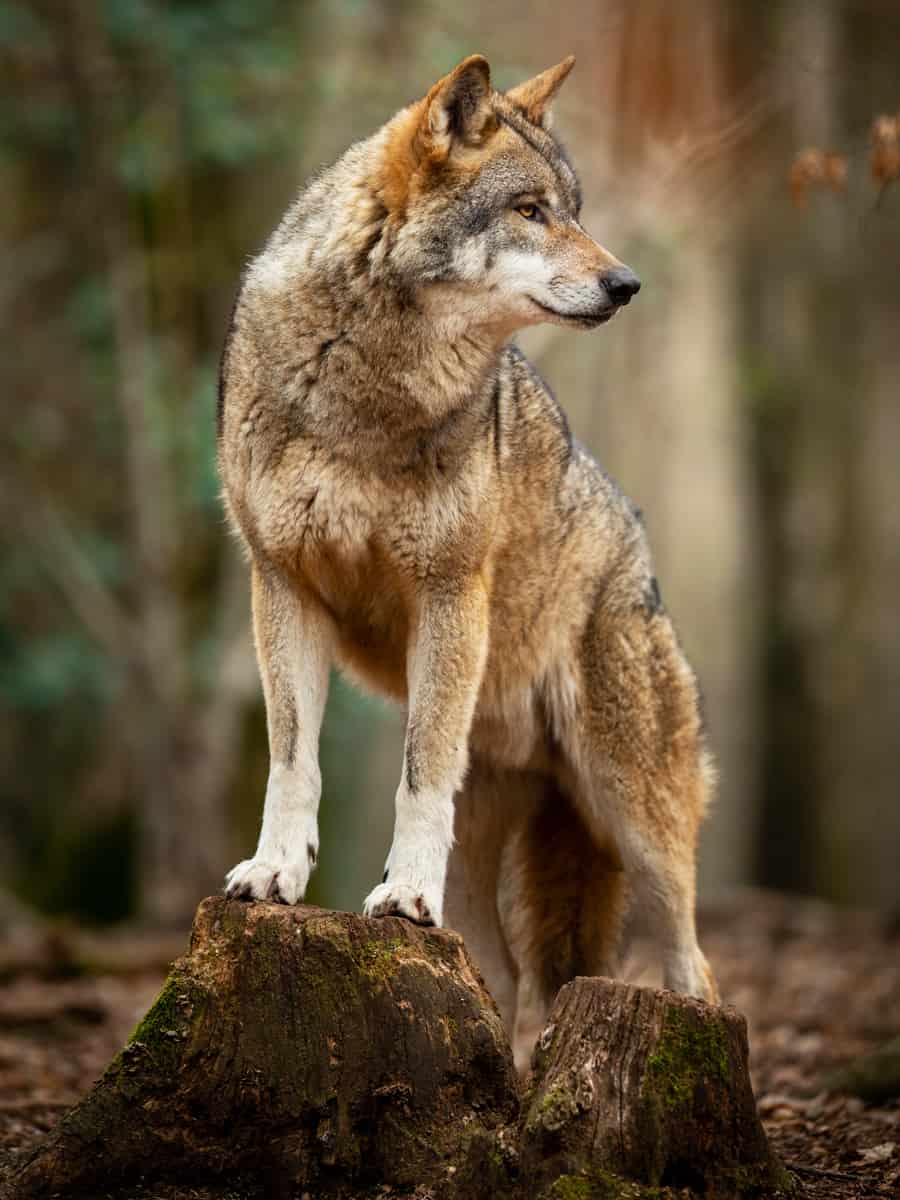
Once nearly extinct in the region, the Gray Wolf has made a remarkable comeback. They play a crucial role in the park’s ecosystem, maintaining healthy wildlife populations through their presence.
5. Grizzly Bear

The North Cascades are working toward becoming a sanctuary for the rare Grizzly Bear. While sightings are exceptionally rare, these magnificent creatures are a vital part of the park's natural heritage.
6. Bald Eagles
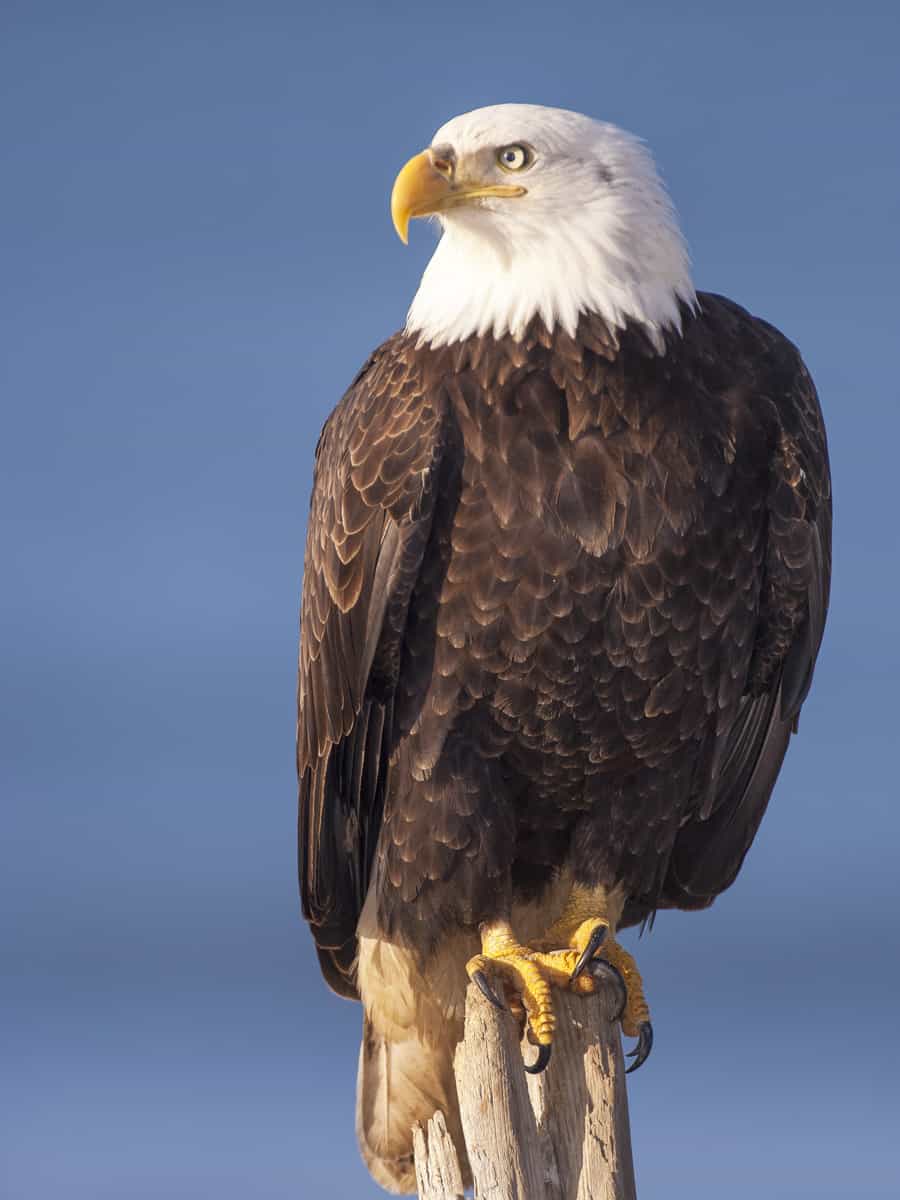
You might also spot the Bald Eagles soar high above the sky, particularly around river valleys. Their impressive wingspan is a sight to behold as they master the skies in search of salmon.
7. Pacific Salmon
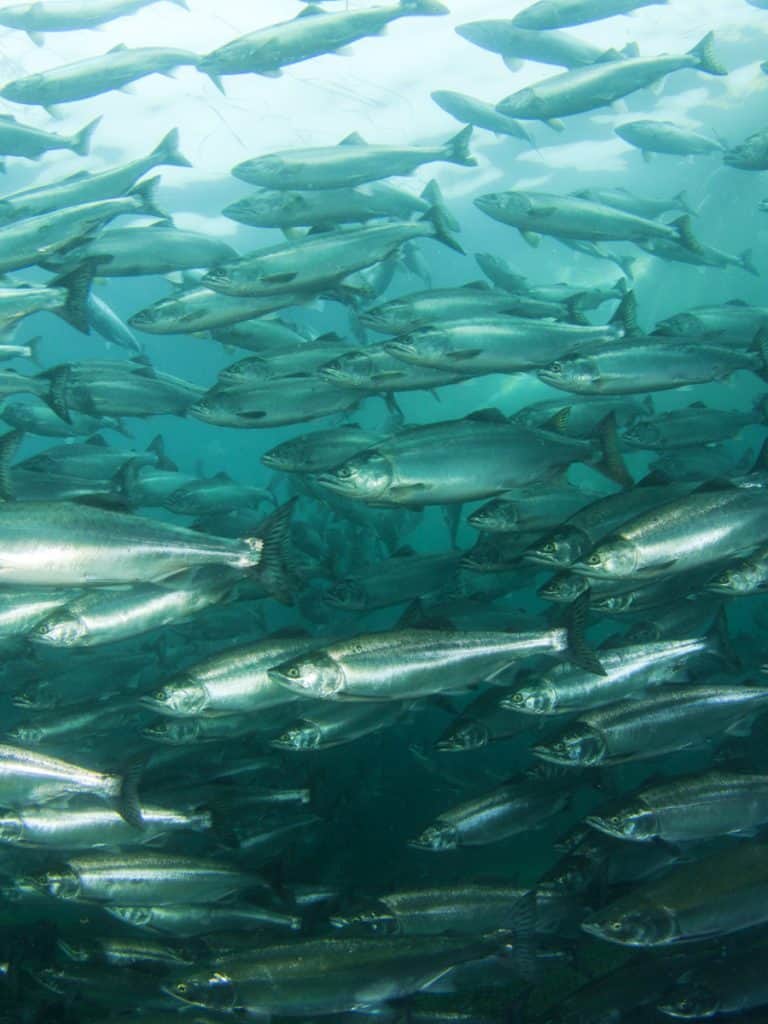
The Pacific Salmon brave powerful currents to return to their spawning grounds. Witnessing their journey is nothing short of inspirational – a testament to life's enduring cycle.
8. Harlequin Ducks
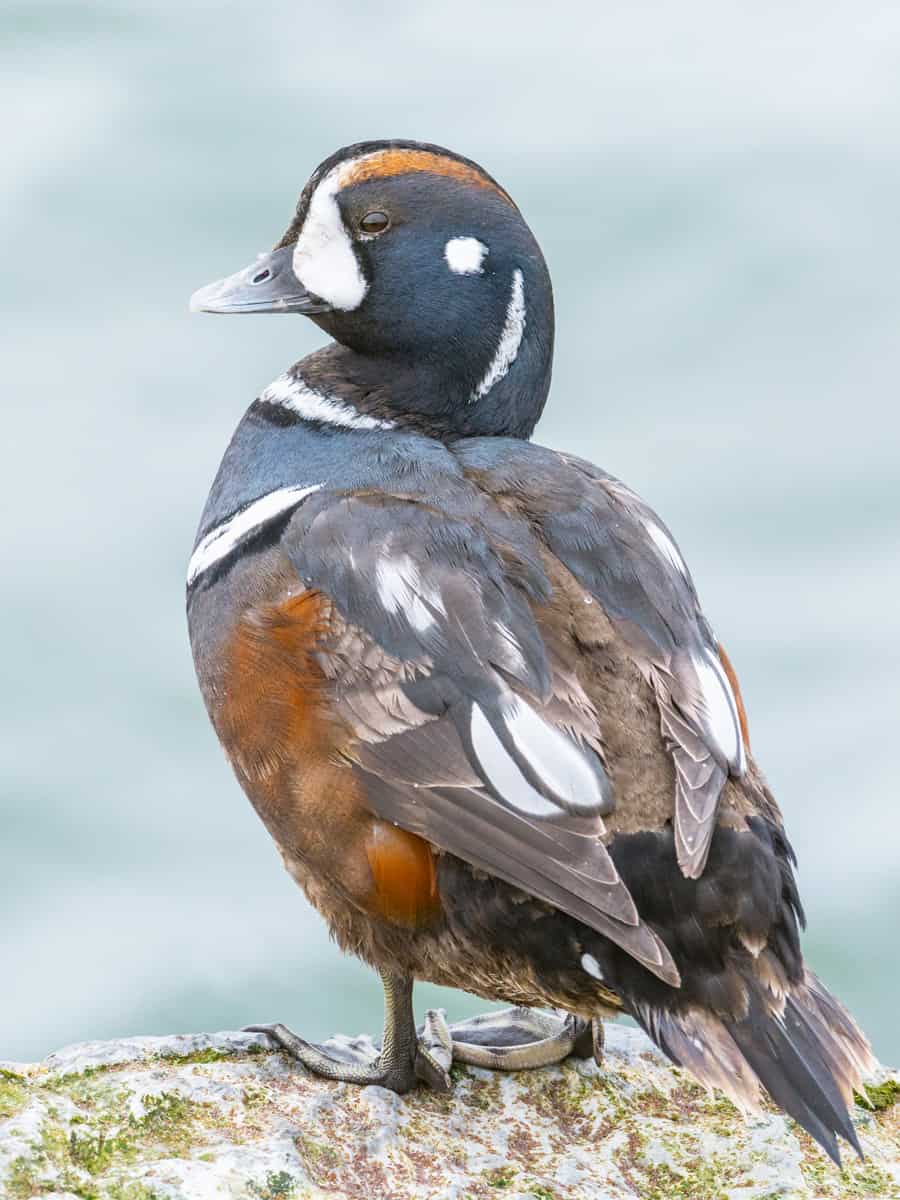
Unique to fast-flowing streams, Harlequin Ducks are often seen navigating the rapids. Their colorful plumage and playful demeanor provide a splash of joy to the river scene.
Parking and Transportation Tips for North Cascades National Park
If you've been enticed and are now planning a trip to the North Cascades National Park, we have some tips for you to pack along with!
Knowing where to park and how to get around can greatly enhance your experience.
Car Travel
The most common way to access the park is by car. The scenic North Cascades Highway (State Route 20) is the main route in.
Be aware that this highway is typically closed due to snow from November through April. Naturally, using a GPS is a smart move for easier navigation and timely updates on road conditions.
Parking and Passes
Parking areas tend to fill up quickly, especially during peak season (July – September). So, you'll also want to get there early in the morning to secure a spot.
Some trailheads and recreation sites also require a parking pass. You can purchase an annual or day pass, depending on the length of your stay.
Traveling by Plane
Located about 120 miles from the North Cascades Visitor Center, Sea-Tac is the nearest major airport with a wide range of domestic and international flights.
Some other alternatives include:
- Vancouver International Airport: Approximately 130 miles from the Visitor Center, this airport is a viable option for visitors coming from or through Canada.
- Bellingham International Airport: Offers limited commercial air service and is closer to the park than Sea-Tac.
- Pangborn Memorial Airport: Provides limited commercial service for Wenatchee and Chelan.
- Chelan Seaplanes: For a unique approach, consider taking a floatplane from Chelan to Stehekin and Lake Chelan National Recreation Area.
Public Transportation Options
Currently, there is no direct public transportation to the park. However, you can reach nearby communities by bus or shuttle services.
For example, Amtrak's Cascades service arrives twice daily at Mount Vernon station from both Seattle and Vancouver, BC, while The Empire Builder arrives once per day from both Seattle and Minneapolis-St. Paul.
Bus services like Greyhound and local transit authorities like Whatcom Transportation Authority and Skagit Transit also provide access to gateway communities near the park.
When's the Best Time to Visit?
The best time to visit North Cascades National Park is generally from mid-June to late September. By July, the snow has melted from all but the highest trails, making the park's diverse landscapes more accessible.
Autumn and spring are also becoming increasingly popular times to visit.
These "shoulder seasons" offer unique opportunities for car tours through Stehekin Valleys, which is particularly enticing for their color changes and wildlife sightings.
We wouldn't recommend going in the winter since the snow can be really heavy and most facilities are closed. Accessibility can also be limited due to avalanche conditions.
Staying Safe on Your Journey
To make the most of your journey, staying safe is important. Remember, there's no adventure in an accident!
- Plan Ahead: Start by obtaining any necessary backcountry permits for your trip, ensuring you're all set for a lawful and organized trek.
- Be Weather Wise: The weather can change rapidly, so dress in layers and always carry a waterproof jacket. Hypothermia is sneaky – don't let it catch you off-guard!
- Stay on Trails: It's tempting to venture off the beaten path, but staying on designated trails keeps you safe from unseen hazards. Plus, it protects the park’s fragile ecosystem.
- Mind the Wildlife: They're as wild as the landscape! Observe from a distance, store your food properly, and never feed the animals. They've got diet plans of their own.
Get Ready to Explore the North Cascades National Park!
If you're seeking an escape into the untouched wilderness, North Cascades National Park is your ideal adventure. With its rugged beauty, the park offers breathtaking experiences sure to create lasting memories.
You've got all the tools—just remember to prepare for changing weather and leave no trace to preserve this pristine environment.
